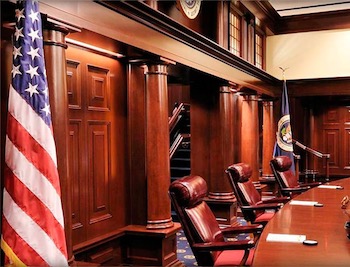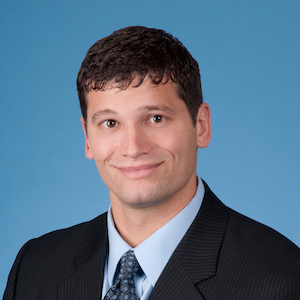“Acceleration’s poor claim drafting will not be an excuse for it to infuse confusion into its claim scope,” wrote Judge Moore. “We see no beneficial purpose to be served by failing to include a transition word in a claim… and we caution patentees against doing so.”
 Acceleration Bay appealed the final written decisions of the Board holding claims 1-9 of U.S. Patent No. 6,829,634, claims 1-11 and 16-19 of U.S. Patent No. 6,701,344, and claims 1-11 and 16-17 of U.S. Patent No. 6,714,966 all unpatentable. Petitioners Activision Blizzard, Inc., Electronic Arts Inc., Take-Two Interactive Software, Inc., 2k Sports, Inc., and Rockstar Games, Inc. (collectively, “Blizzard”) also cross-appealed portions of the Board’s decisions holding patentable claims 10-18 of the `634 patent, as well as substitute claims 19 of the `966 patent, 21 of the `344 patent, and 25 of the `634 patent. Blizzard also cross appealed the Board’s decisions holding that one particular reference — the Lin article — was not a printed publication under 35 U.S.C. § 102(a). In an opinion authored by Judge Moore and joined by Chief Judge Prost and Judge Reyna, the Federal Circuit affirmed the PTAB decision, finding that both Acceleration Bay’s and Blizzard’s arguments were without merit. See Acceleration Bay, LLC v. Activision Blizzard, Inc., Nos. 2017-2084, 2017-2085, 2017-2095, 2017-2096, 2017-2097, 2017-2098, 2017-2099, 2017-2117, 2017-2118, 2018 (Fed. Cir. Nov. 6, 2018).
Acceleration Bay appealed the final written decisions of the Board holding claims 1-9 of U.S. Patent No. 6,829,634, claims 1-11 and 16-19 of U.S. Patent No. 6,701,344, and claims 1-11 and 16-17 of U.S. Patent No. 6,714,966 all unpatentable. Petitioners Activision Blizzard, Inc., Electronic Arts Inc., Take-Two Interactive Software, Inc., 2k Sports, Inc., and Rockstar Games, Inc. (collectively, “Blizzard”) also cross-appealed portions of the Board’s decisions holding patentable claims 10-18 of the `634 patent, as well as substitute claims 19 of the `966 patent, 21 of the `344 patent, and 25 of the `634 patent. Blizzard also cross appealed the Board’s decisions holding that one particular reference — the Lin article — was not a printed publication under 35 U.S.C. § 102(a). In an opinion authored by Judge Moore and joined by Chief Judge Prost and Judge Reyna, the Federal Circuit affirmed the PTAB decision, finding that both Acceleration Bay’s and Blizzard’s arguments were without merit. See Acceleration Bay, LLC v. Activision Blizzard, Inc., Nos. 2017-2084, 2017-2085, 2017-2095, 2017-2096, 2017-2097, 2017-2098, 2017-2099, 2017-2117, 2017-2118, 2018 (Fed. Cir. Nov. 6, 2018).
Patent Owner Appeals
On appeal, Acceleration Bay challenged the construction of certain claims terms, specifically “participant”, “game environment” and “information delivery service”.
Claim 1 of the `966 patent was considered representative of the claim construction disputes in Acceleration’s appeal:
1. A computer network for providing an information delivery service for a plurality of participants, each participant having connections to at least three neighbor participants, wherein an originating participant sends data to the other participants by sending the data through each of its connections to its neighbor participants and wherein each participant sends data that it receives from a neighbor participant to its other neighbor participants, further wherein the network is m-regular, where m is the exact number of neighbor participants of each participant and further wherein the number of participants is at least two greater than m thus resulting in a noncomplete graph.
Acceleration Bay argued that the Board erred by construing the term “participant” according to its plain meaning. The Court rejected this position noting that neither the claims nor the specification defined the term with detailed structural information, which was in fact admitted during oral argument. Thus, it was not error for the Board to rely on the plain meaning of the term “participant”.
Acceleration Bay also argued that “game environment” and “information” should be given patentable weight. Acceleration Bay argued that it was improper to consider these terms to be a part of the preamble because there is no transition in the claim, effectively making the entire claim the body of the claim. “Acceleration’s poor claim drafting will not be an excuse for it to infuse confusion into its claim scope,” wrote Judge Moore. After finding that the terms in question were, in fact a part of the preamble, Judge Moore cautioned practitioners: “We see no beneficial purpose to be served by failing to include a transition word in a claim to clearly delineate the claim’s preamble from the body, and we caution patentees against doing so.”
Finally, Acceleration Bay argued that the Board failed to identify a broadcast channel, an element in the claims, in the prior art. The Court rejected this argument because it found that Acceleration Bay was attempting to again “import structural limitation into claims lacking those limitations.” The court found that “[t]he language in the specifications falls far short of the language we have found sufficient to limit claims to configurations described in the specification.”
Petitioners Cross-Appeals
Blizzard’s cross-appeal presented three arguments challenging the Board’s decision. First, Blizzard challenged the Board’s finding that a reference was not a printed publication. The Court agreed with the Board’s reasoning that “there was no evidence that [the reference] was disseminated to the public”, and “public accessibility requires more than technical accessibility.” Here the reference in question — the Lin reference —was indexed only by author name and year. While that may make the reference technically accessible, the Court agreed with the PTAB that the reference was not “meaningfully indexed” and that the search capabilities of the index fell short of making the reference publicly accessible, as in accord with a long line of previous Federal Circuit decisions.
Judge Moore further explained:
The test for public accessibility is not ‘has the reference been indexed?’ We have explained that where indexing is concerned, whether online or in tangible media, the ultimate question is whether the reference was available to the extent that persons interested and ordinarily skilled in the subject matter or art, exercising reasonable diligence, can locate it.
(citations and quotations omitted).
Second, Blizzard argued that the Board erred by not crediting its expert testimony that a prior art reference disclosed an element in Acceleration Bay’s challenged patent. The Court rejected this argument because it found that the Board’s decision was supported by substantial evidence. The Court also found it was proper for the Board to not consider this argument because it was improperly raised for the first time in Blizzard’s reply, but it could have and should have been raised in the petition. “Blizzard, as petitioner, had an opportunity to present this argument in its petition, but chose not to,” Judge Moore wrote.
Finally, Blizzard challenged the patentability of certain substitute claims based on the Board’s construction of the term “participants can join and leave the network using the broadcast channel.” The Court found no error in the Board’s construction, noting that “Blizzard provided no construction below, or on appeal, for this claim limitation. The Board, therefore, properly focused on the ordinary meaning . . . .” Ultimately, the Court determined that the Board did not err in determining certain claims and substitute claims are patentable over the prior art.
Take Away
When determining if a reference was a printed publication mere indexing is insufficient – you must prove that the indexing was “meaningful” enough to provide access to the public. Also, when challenging substitute claims during an IPR, the Petitioner must provide claim construction if it is important to their invalidity argument; otherwise, it is not error for the Board to focus on the ordinary meaning of the substitute claim language.
Image Source: Federal Circuit.

![[IPWatchdog Logo]](https://ipwatchdog.com/wp-content/themes/IPWatchdog%20-%202023/assets/images/temp/logo-small@2x.png)




![[Advertisement]](https://ipwatchdog.com/wp-content/uploads/2024/04/UnitedLex-May-2-2024-sidebar-700x500-1.jpg)
![[Advertisement]](https://ipwatchdog.com/wp-content/uploads/2024/04/Artificial-Intelligence-2024-REPLAY-sidebar-700x500-corrected.jpg)
![[Advertisement]](https://ipwatchdog.com/wp-content/uploads/2024/04/Patent-Litigation-Masters-2024-sidebar-700x500-1.jpg)

![[Advertisement]](https://ipwatchdog.com/wp-content/uploads/2021/12/WEBINAR-336-x-280-px.png)
![[Advertisement]](https://ipwatchdog.com/wp-content/uploads/2021/12/2021-Patent-Practice-on-Demand-recorded-Feb-2021-336-x-280.jpg)
![[Advertisement]](https://ipwatchdog.com/wp-content/uploads/2021/12/Ad-4-The-Invent-Patent-System™.png)






Join the Discussion
No comments yet.